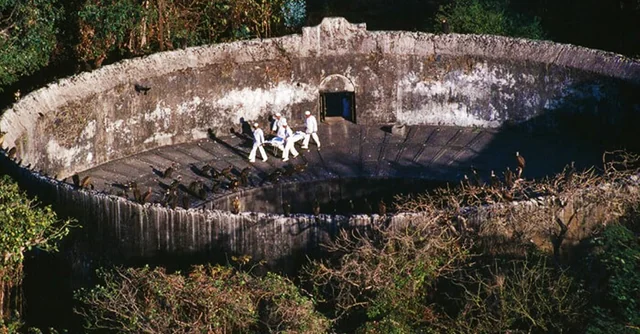Amidst the bustling city of Mumbai lies a quiet and mysterious site that has fascinated historians, travelers, and spiritual seekers alike — the Tower of Silence. Known in Zoroastrian tradition as Dakhma, it is a circular, open-air structure where members of the Parsi community have practiced their ancient funeral rituals for centuries.
What Is the Tower of Silence?
The Tower of Silence is a stone-built structure, usually raised on a hilltop. At its core lies a simple yet profound belief of the Zoroastrian faith: the elements of nature — fire, water, earth, and air — are sacred and must never be polluted by human remains.
Instead of burial or cremation, the deceased are placed atop the tower, exposed to the sun and birds of prey. This practice ensures that the body, considered impure after death, returns swiftly to nature without contaminating the holy elements.
The Ritual and Its Meaning
The process is deeply spiritual and symbolic:
- Purity of nature: By avoiding burial and cremation, the community preserves soil, firewood, and air from ritual pollution.
- Cycle of life: Vultures play an essential role, transforming human remains into part of the ecological cycle.
- Respect for creation: This aligns with the Zoroastrian belief in maintaining balance and harmony in the world.
Towers of Silence in India
The most well-known Tower of Silence lies on Malabar Hill in Mumbai, hidden within the green gardens of Doongerwadi. This 55-acre site has served as the sacred resting place for Parsis since the 17th century. Because the community is relatively small and private, access to the towers is restricted to Zoroastrians.
Challenges in Modern Times
In recent years, the practice has faced challenges due to the sharp decline in India’s vulture population. As vultures play a central role in the ritual, their disappearance has forced the Parsi community to explore alternative solutions, such as solar reflectors to aid the natural process.
Cultural Significance
For outsiders, the Tower of Silence may appear mysterious or even unsettling, but for Parsis, it remains a deeply spiritual expression of their respect for nature and devotion to the teachings of Zoroaster. It reflects how traditions, though ancient, can carry timeless lessons about sustainability and reverence for the environment.
Final Thoughts
The Tower of Silence is more than a funerary site — it is a symbol of the Parsi community’s resilience and their enduring bond with nature. In an age of rapid modernization, it stands as a reminder that spirituality and sustainability can go hand in hand.
